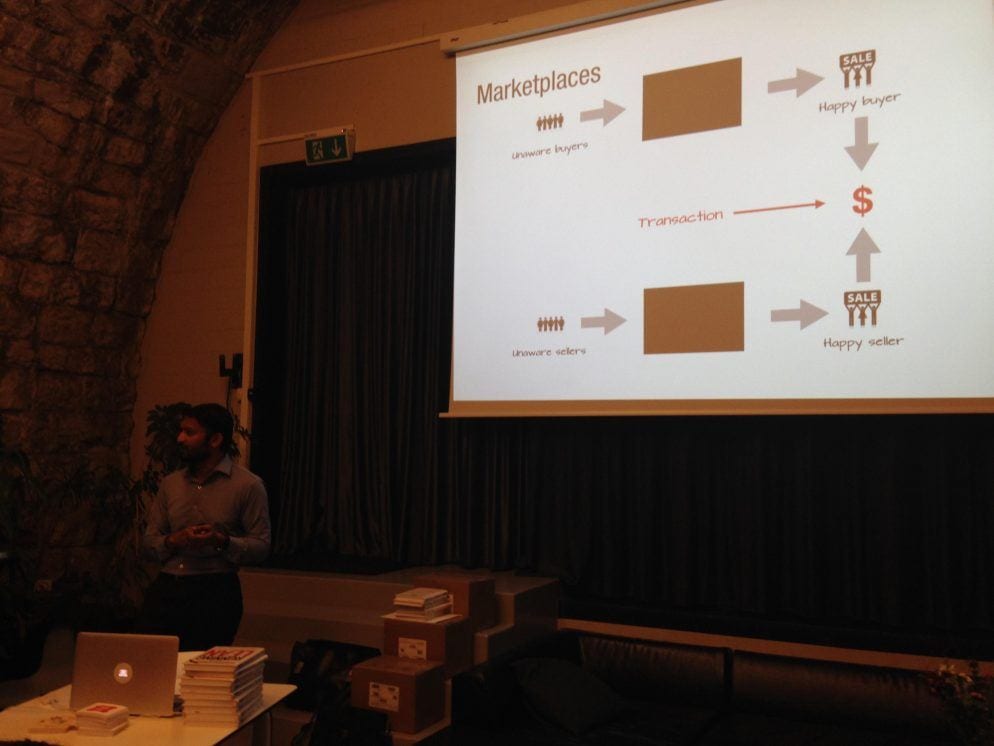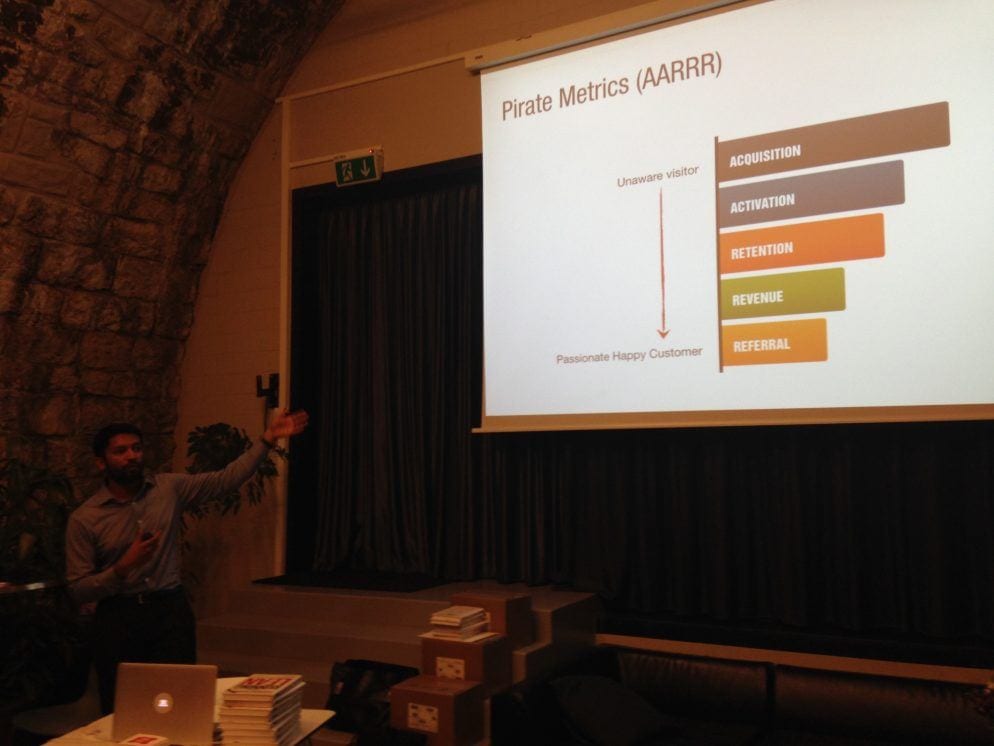Speech by Ash Maurya at Lean Startup Zurich @LNZRH #leanstack
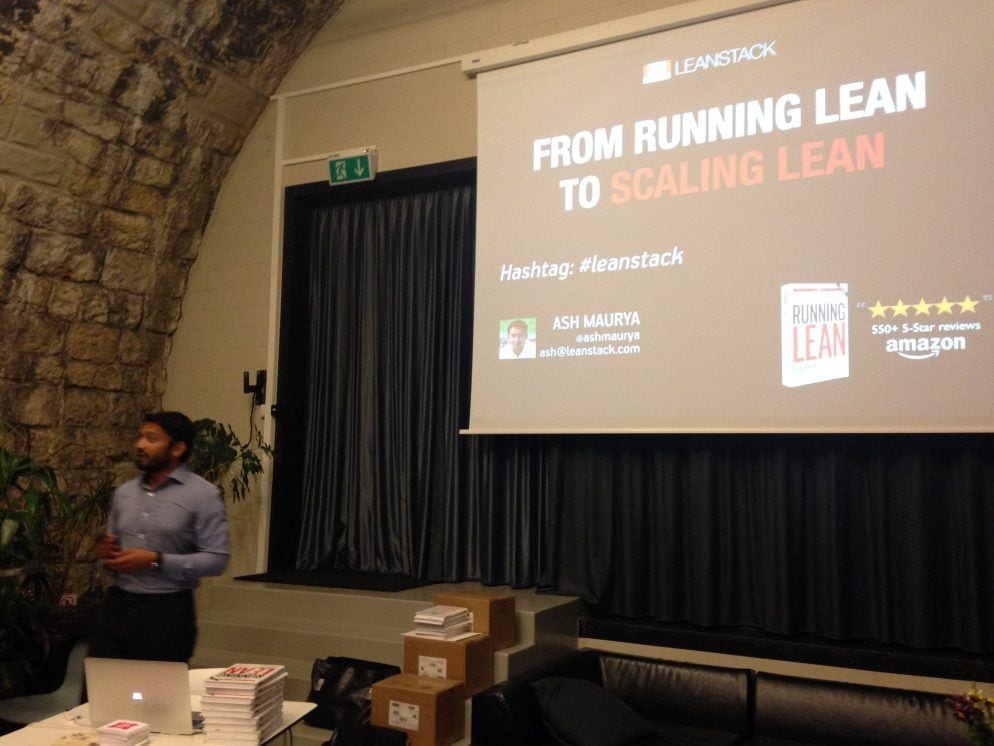
Investors want to see a business model, customers want their problems solved. The #1 reason for failed products is simply wrong products. The great solution is not a great product!
Lean is about quickly cross-checking product ideas with potential customers or investors.
The lean canvas is a one page business model. It’s structured and answers the relevant questions. It should be optimized talking to potential stakeholders.
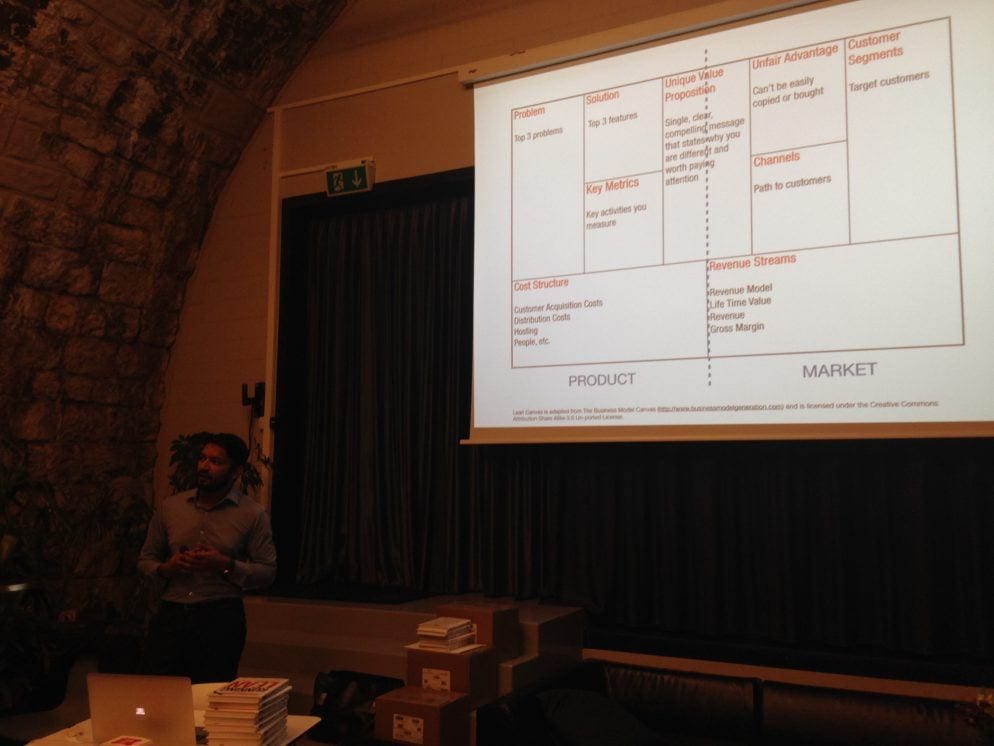
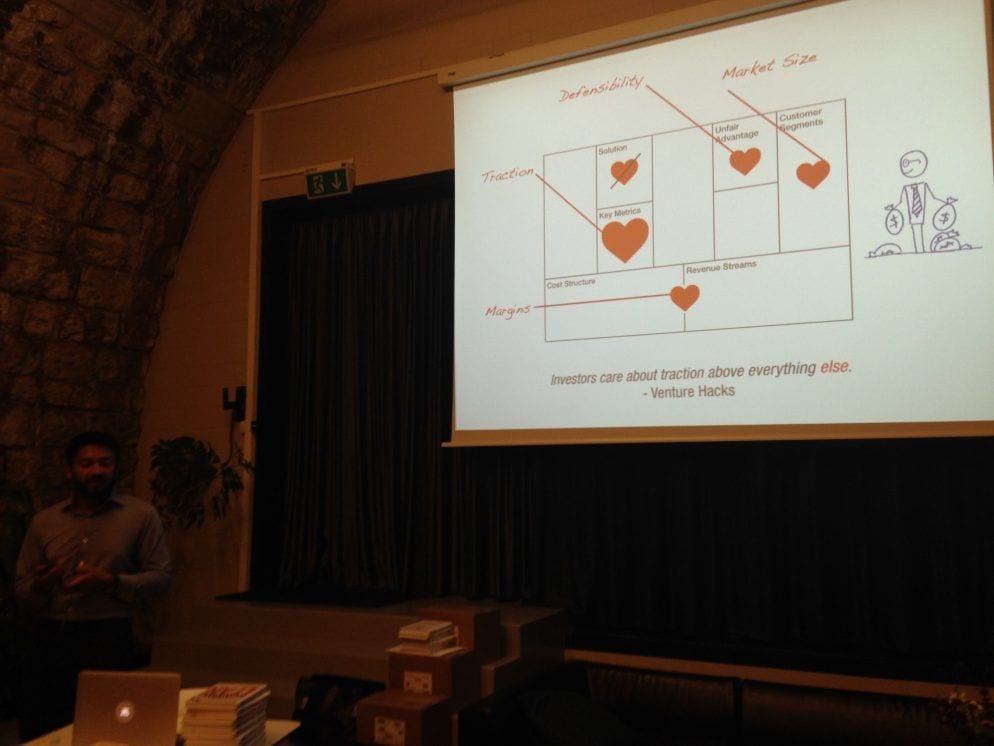
If you are to start a risky endeavor like a new restaurant you might first want to test your cooking in a food truck. If you sell out you might want to think about a larger location.
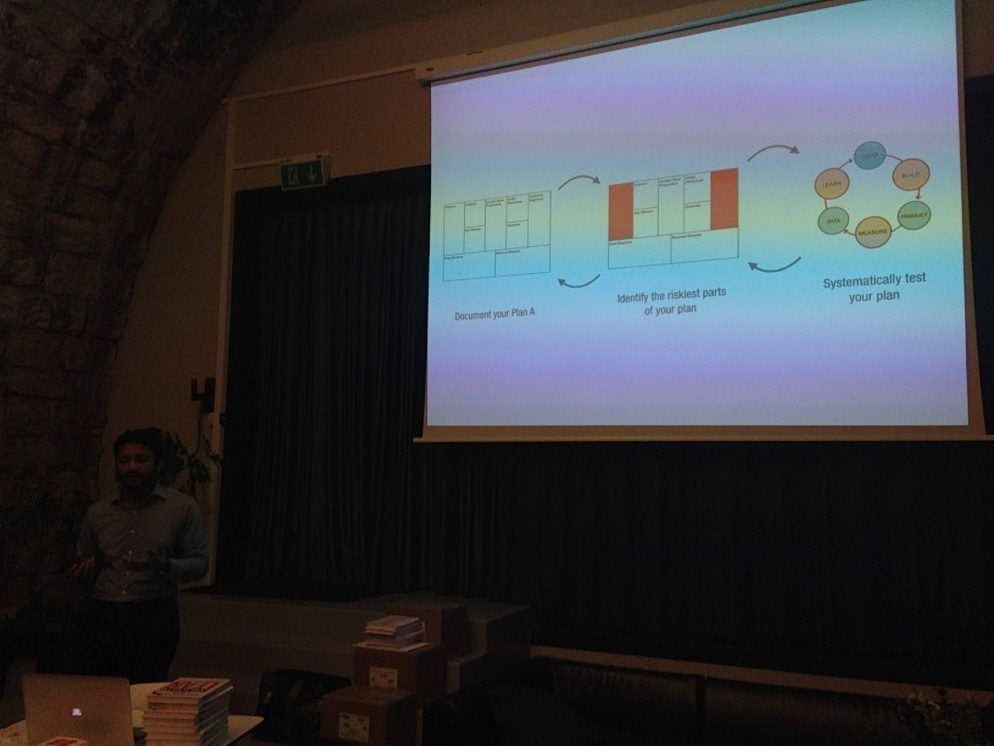
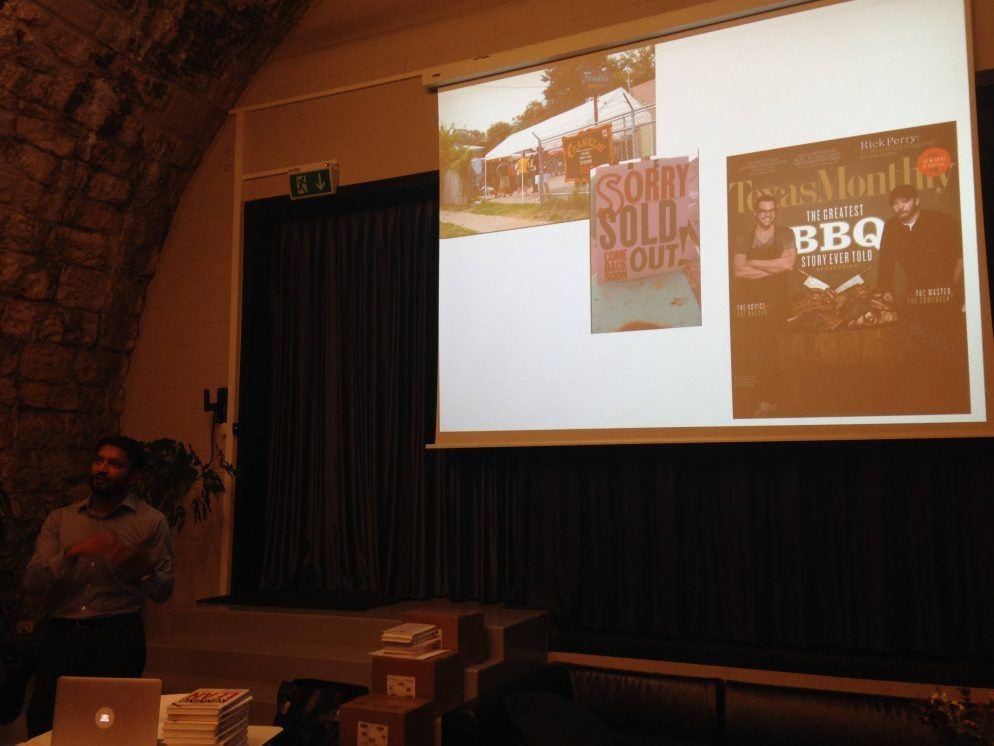
To create a lean canvas is one thing, but to scale successful approaches is a complete different ballgame.
Defining Progress
If you don’t know where you’re going, any road will get you there.
Alice in Wonderland
Investors care about traction above everything else. But just gaming vanity metrics won’t cut the mustard.
Saul Kaplan: A business model describes how you create, deliver and capture customer value.
You need to create more value in the mind of customer than you actually charge (perceived fair transaction; value equation). The captured value needs to be bigger than the cost (deliver value, monetization equation).
Traction is the rate at which a business model captures monetizable value from its customers. Starbucks› customer lifetime value is $14’000 – $20’000. The time people spend at their shops correlates with revenues. Hence the importance of great locations and cosy sofas…
The customer factory is about dealing with unaware visitors and turning them into happy customers. This focuses on making happy customers vs making customers happy.
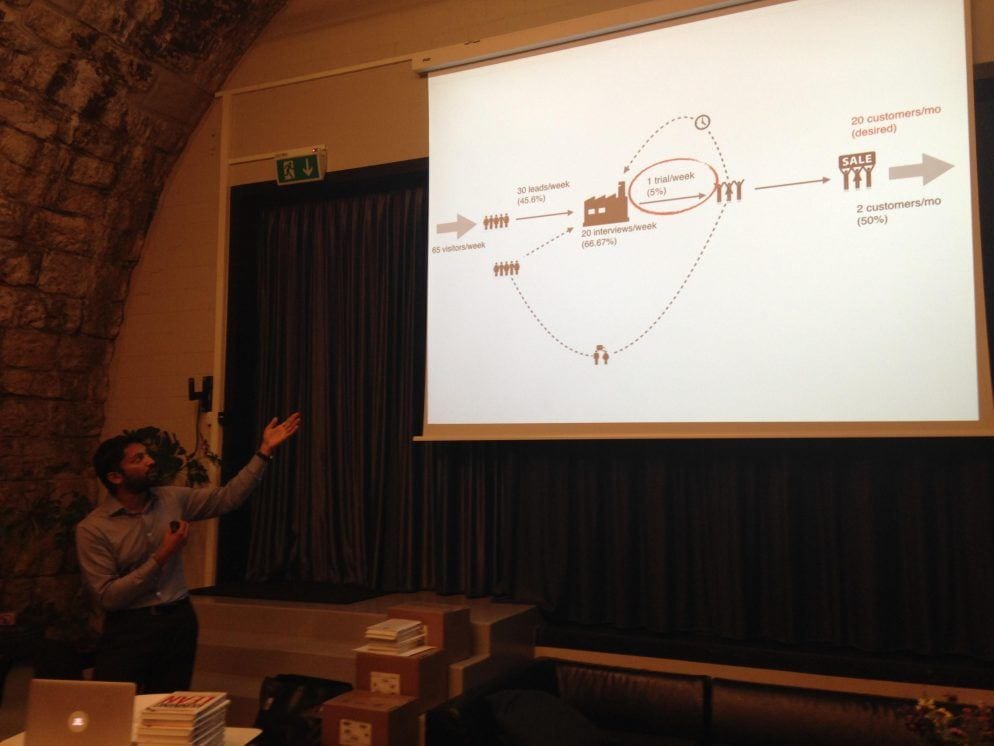
Business models include direct models with one supplier and many customers.
Multi-sided models include adding value first to users and monetizing later via other channels, e.g. advertising on news pages.
Creating this business may include two different business canvases.
The marketplace model includes buyers and sellers, e.g. Ebay, AirBnB.
This definitely includes two different sides with different ramifications.
Seeing Waste
Before you can prioritize waste you have to see the factory floor!
There are many options to create awareness for a product (acquisition). A good experience will create good feelings (activation and retention). Each time they buy something you can place a price tag (revenue).
Once customers leave, they will tell other users about their experience (referral). Hence the importance of happy customers, they will return more often, buy more and create more referrals.
Happy customers often time are more important at the beginning of a business than scaling (3 engine model via acquisition, retention, referrals).
Achieving Breakthrough
Waste is everywhere. There are only a few key actions that matter. Focus on those and ignore the rest! Every business usually has one single weak link. Therefore beware of local vs system optima. But unfortunately it’s hard to predict the next weak link. Avoid premature optimization!
Paying salesmen before you can retain customers is a bad idea as they try to optimize towards the end of the month hampering the customer experience…
Qualifying leads can be an effective measure to optimize. But it will generate less leads while raising the throughput. It’s important to look at the whole factory to optimize the right constraints.
Thanks @ashmaurya for an interesting speech on Running Lean http://t.co/4swN9ti3yE at @LNZRH #leanstack #leanstartup
— Walter Schärer (@WalterSchaerer) October 19, 2015

